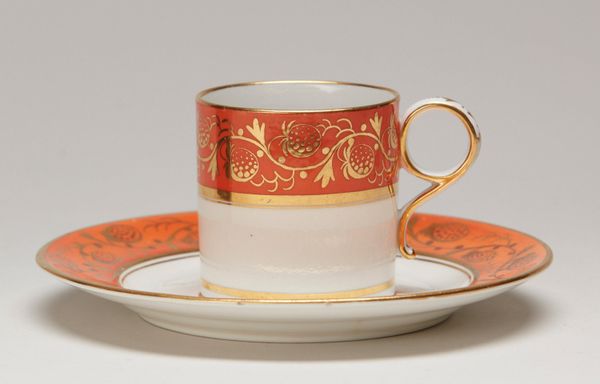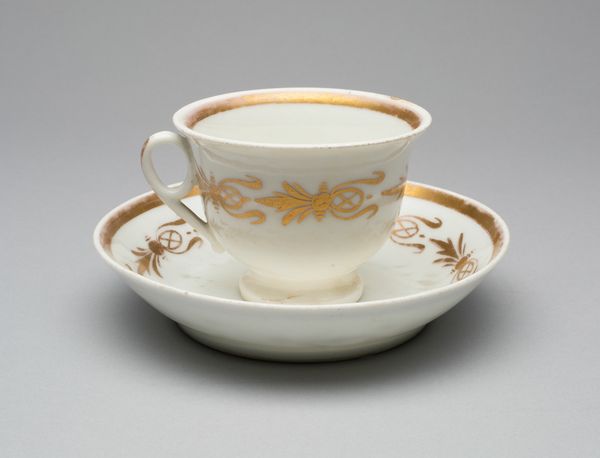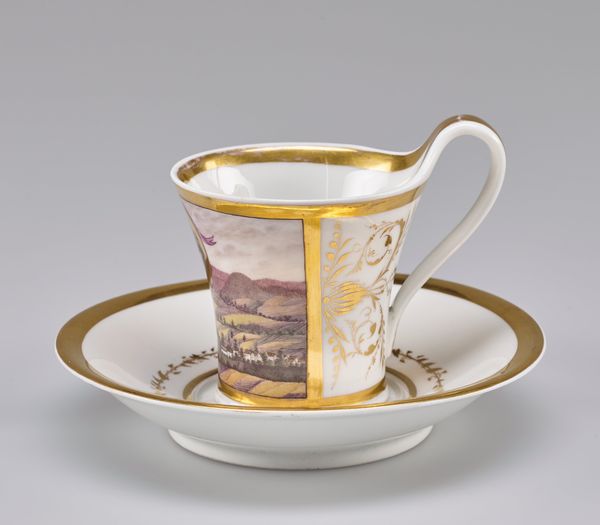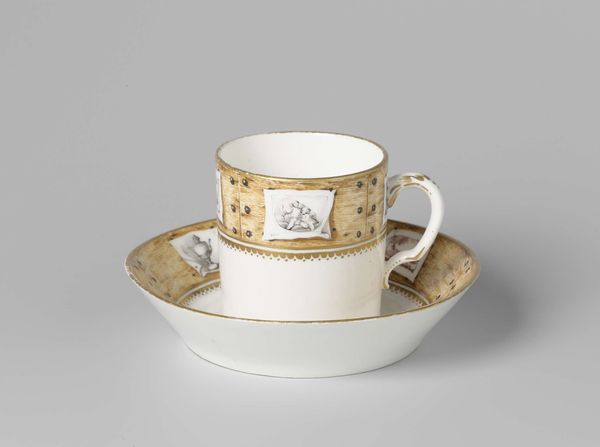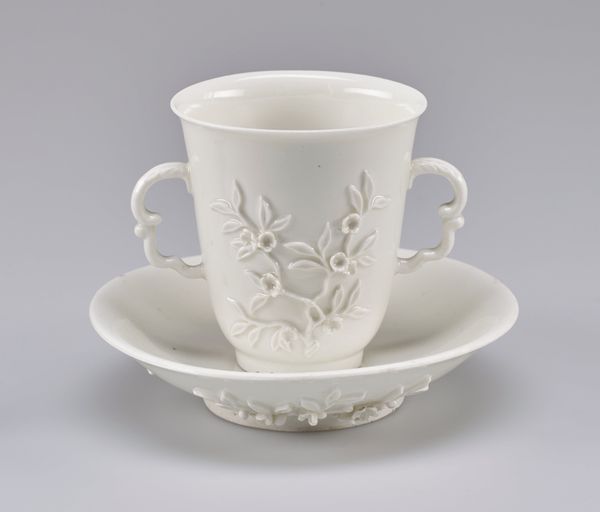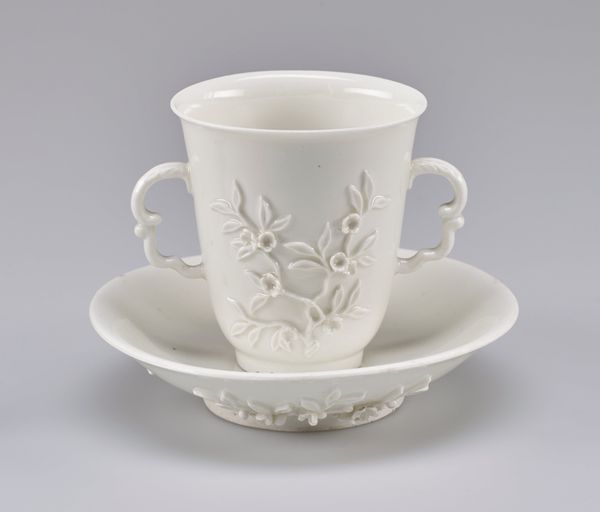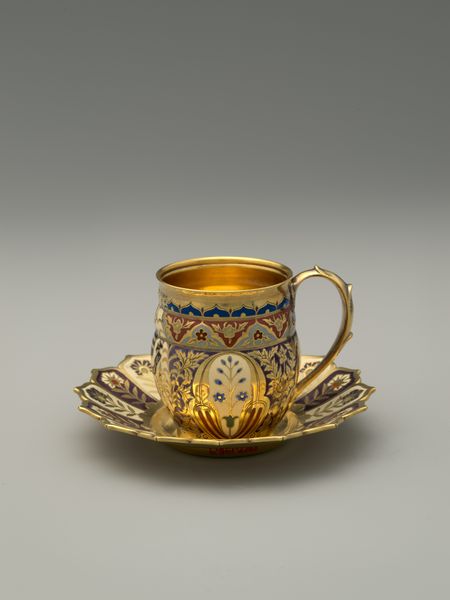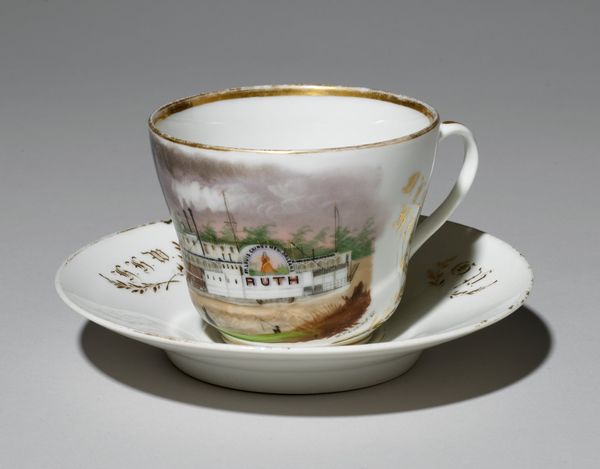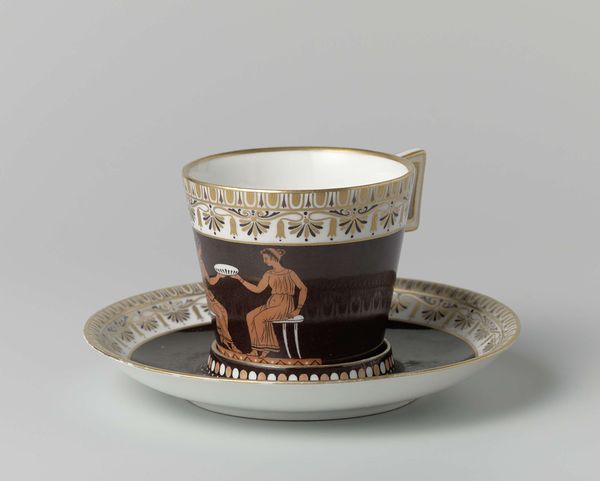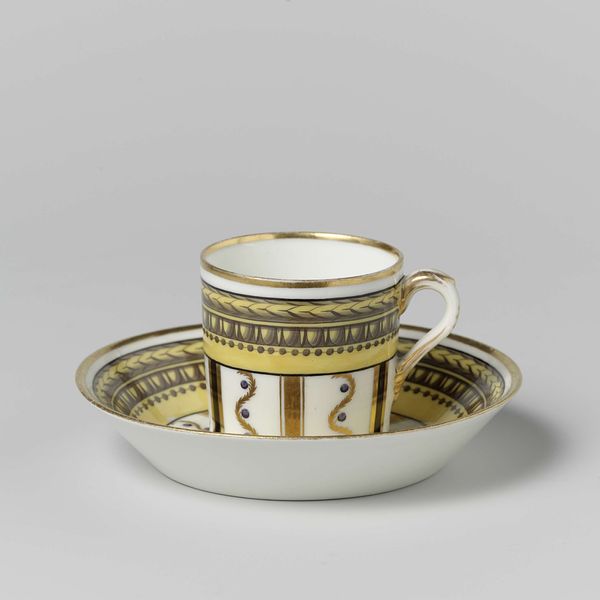
Cup and Saucer from a Tea Service 1807 - 1813
0:00
0:00
ceramic, porcelain
#
pottery
#
neoclassicism
#
ceramic
#
porcelain
#
england
#
decorative-art
Dimensions: 2 7/8 x 6 1/8 x 6 1/8in. (7.3 x 15.6 x 15.6cm)
Copyright: Public Domain
Curator: This striking porcelain cup and saucer was created between 1807 and 1813 by the Worcester Porcelain Works, also known as the Royal Worcester Porcelain Company in England. It is currently housed here at the Minneapolis Institute of Art. Editor: I'm immediately drawn to the color palette. The warm coral contrasts beautifully with the creamy white porcelain, all accented by the gleam of the gold leaf. The handle of the cup—the way it loops and extends upwards—strikes me as so elegant. Curator: Indeed, its elegance speaks to the period’s embrace of neoclassicism, a style heavily influenced by ancient Greek and Roman art and design. It speaks to an aspirational culture, as well. Editor: You can see that influence in the decorative motifs—that repeating pattern of what appears to be stylized fruit interspersed with delicate, gold tendrils. There is a sense of contained ornamentation that's pleasing. How does this kind of porcelain function within a larger history? Curator: Porcelain like this served as a signifier of wealth and status during the early 19th century. Tea drinking itself became a social ritual closely associated with the elite, a demonstration of refinement. To own such a set demonstrated an ability to participate in the politics of social performance and distinction. It reflected growing trade routes between Britain and China too, as this is when 'china' began flooding Europe, causing the advent of various, competing European porcelain manufactories. Editor: It's amazing how objects like this, seemingly so simple and functional, hold such layers of social and cultural significance. Thinking about its structure—the perfectly circular form of both cup and saucer, the vertical lines of the cup's body offset by that curved handle, even the thin bands of gold trim—each element contributes to an overall aesthetic of restrained opulence. Curator: I agree. It bridges art and social history in its making. Its Neoclassical form is the outcome of centuries of trade practices, complex power dynamics, and the commodification of aesthetics. Editor: Absolutely. A quiet testament to its place and time. Curator: I never would've put it that way myself. Thanks for pointing that out.
Comments
No comments
Be the first to comment and join the conversation on the ultimate creative platform.

